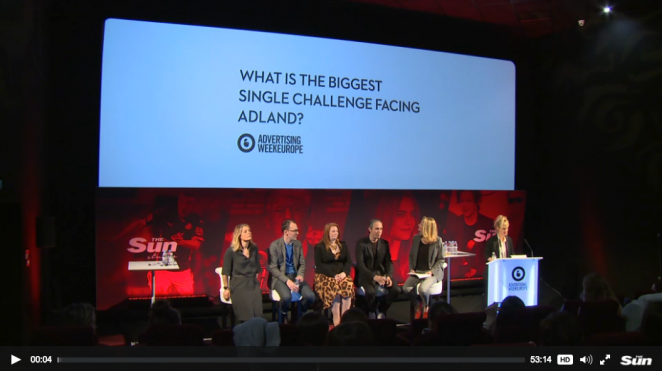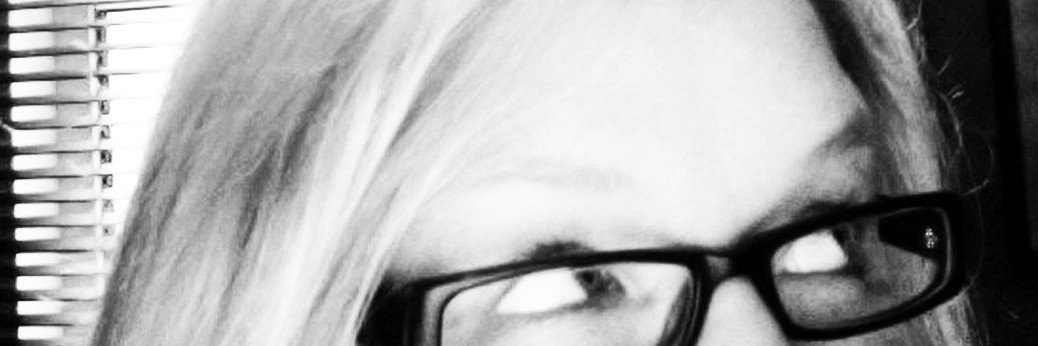As IPA president Tom Knox says: ''It remains an uncomfortable truth that men dominate creative departments and this cannot be good for creativity and our ability to solve our clients’ business problems. Finding ways to encourage more women into creative departments and keep them there is an urgent necessity.'
Something's not adding up in AdLand. Women now account for 85% of all purchasing decisions - from tech and cars to homes and utilities - and yet they make up only 13% of London's Creative Directors and a poor 25% of creative departments. McKinsey studies have shown that diverse teams not only impact the quality of creative product but are also better for business. It’s no secret things need to change - but how do we start to balance the stats?
 Ali Hanan, my partner in Creative Equals and I decided to tackle this head on, on stage at AdWeek Europe – inviting guest panellists who are successfully approaching the issue from many directions to share their actions. Hailing from journalism (Harriet Minter, The Guardian), management (Daniele Fiandaca, Token Man/Creative Social), recruitment (Melissa Smith, The Industry Club), and creative agencies (Simon Richings, AnalogFolk) we set out to highlight the business necessity for change and the bottom-line benefits of more diverse creative departments.
Ali Hanan, my partner in Creative Equals and I decided to tackle this head on, on stage at AdWeek Europe – inviting guest panellists who are successfully approaching the issue from many directions to share their actions. Hailing from journalism (Harriet Minter, The Guardian), management (Daniele Fiandaca, Token Man/Creative Social), recruitment (Melissa Smith, The Industry Club), and creative agencies (Simon Richings, AnalogFolk) we set out to highlight the business necessity for change and the bottom-line benefits of more diverse creative departments.
We’re all about action so rather than reciting verbatim, here are some key issues and the ‘do’s’ so we can all start making change today.
The evil good men do is to do nothing.
We progressive agency types assume that if we all hold good principles, change will happen. Unfortunately this has not been the case. This highlights the difference between having the right principles and actually acting on them. We need for male leaders to take part and act - they are the industry at this time and there simply aren’t enough senior women to make the change.
Being part of the problem
 The photo from a Creative Social in Florence exemplifies the issue; it’s making the ratio acceptable, accepting it as norm. Accepting that first response as ‘We are just a reflection of the industry. It’s not our job to change it.’ No minority has ever created change without the support of the majority. And whilst they may not be a minority in the workplace, women are the minority in senior management and creative departments. Most men in their careers have not had to think about gender, so some of the behaviours happen because they just don’t think about it – it’s time to start.
The photo from a Creative Social in Florence exemplifies the issue; it’s making the ratio acceptable, accepting it as norm. Accepting that first response as ‘We are just a reflection of the industry. It’s not our job to change it.’ No minority has ever created change without the support of the majority. And whilst they may not be a minority in the workplace, women are the minority in senior management and creative departments. Most men in their careers have not had to think about gender, so some of the behaviours happen because they just don’t think about it – it’s time to start.
There is no doubt diversity creates better creativity.
‘Yeah fine – diversity works – but how do you stop the arguing?’ Was a phrase heard many times at the Great British Diversity Experiment. We say embrace the unease, delve for disagreement. When people come from different directions, ages, places and cultures their differing points of view create unpredictable discussion and diversions. This is when the unexpected and amazing answers happen.
The need for a different type of leader – of both genders
New leaders need to be facilitators as opposed to the alpha type leaders of yesteryear. We need to be skilled in directing and harnessing the many differing voices in order to allow conversations to happen. It’s no longer ‘My way or the high way’ more ‘You choose your own path and I’ll be sure to get you there’.
The female leader model has also changed, with latest wave leaders becoming the enabler – encouraging more women in to and to remain in the industry. We recognise the need to draw more women up the ladder and soon – echoing the facilitator model we see coming to the fore across both genders.
It falls to all of us to make better creative fit for the world we want to see
We need male leaders to be policing the usual suspects within their departments and creative they see and too. We can all be key proponents for more diverse responses - viewing work and behaviours with a female lens. The duty of all creative leaders is to be that lens – to create departments where diversity thrives, to constantly push and filter if work is simply responding to the world out there – or if we are truly shaping the work and the world we want to see.
Many small things will make a big difference
There is no silver bullet – but many things that make up the environment we need to change especially within the bastion that is the creative department. As our panel highlighted we can begin from many directions, there is much to be done and much that can be done - you can find a list of ‘32 things to do today’ on creativeequals.org
So I challenge you in the name of better, more effective creative to do one thing today. You can watch the full talk here



